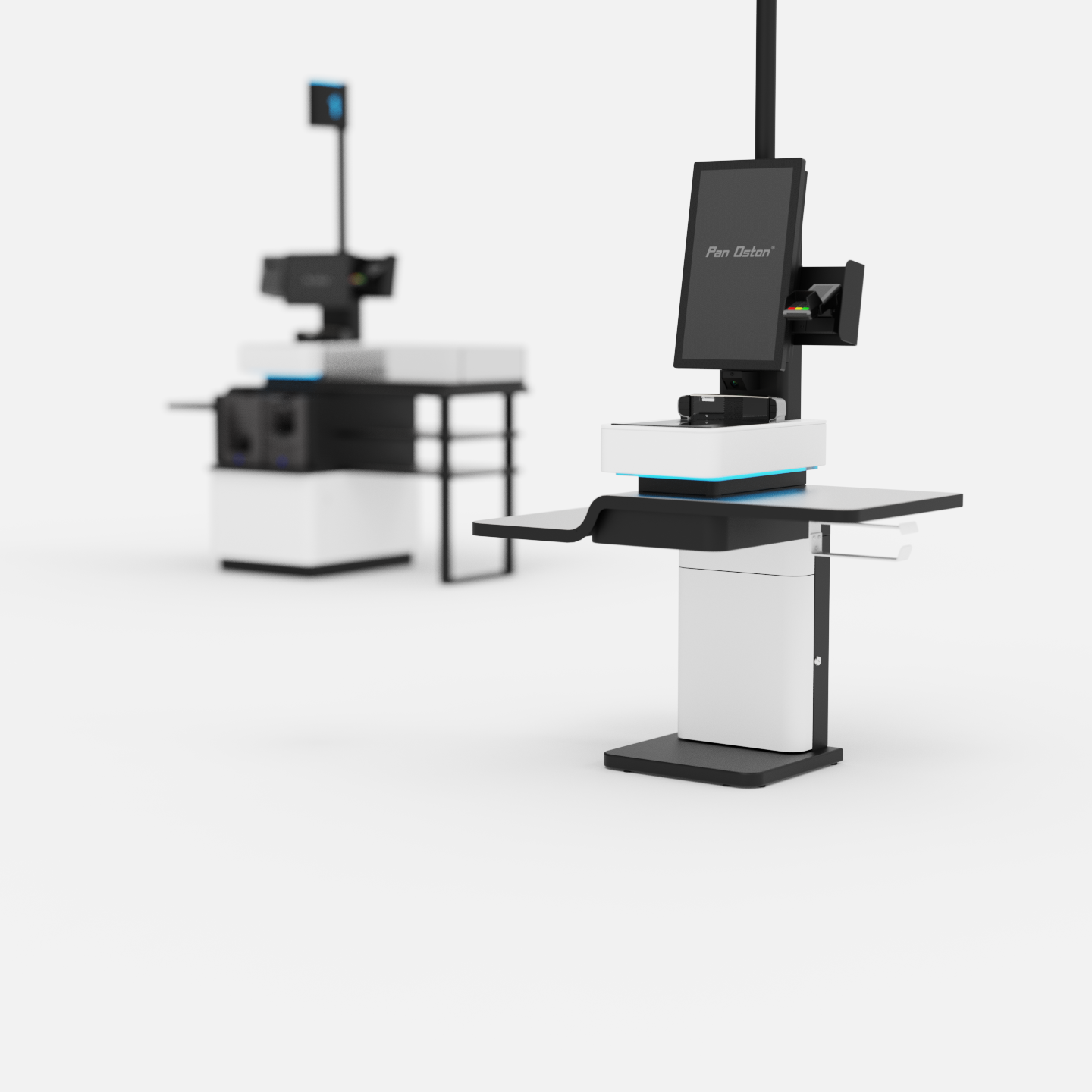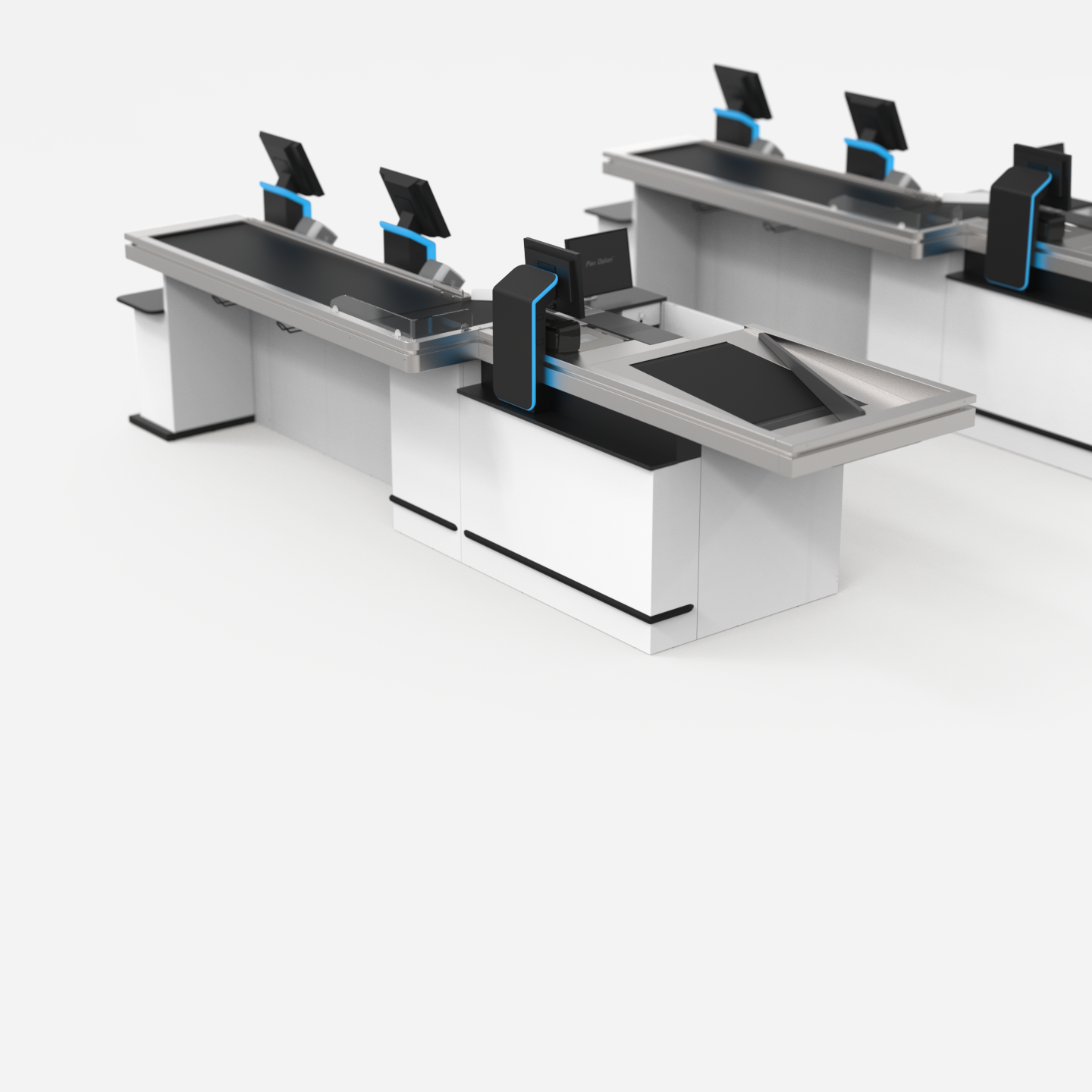The implementation of self checkouts in DIY environments
Self-checkout machines have been around for a few decades, but they have recently become increasingly popular in a range of retail settings, including DIY stores and garden centers . The use of self checkouts at DIY stores and garden centers may seem counterintuitive at first glance, considering the sheer diversity of products on offer. An effective self-checkout must be able to deal with a wide range of products, from very small to very large or oddly shaped, as well as large quantities of items being purchased. Despite these challenges, self checkout machines offer several advantages within the DIY or garden center retail environment, including convenience, speed, and reduced waiting times. They also empower customers to take control of their own shopping experience, allowing them to scan items, pack them, and make payment without the need for assistance from a cashier or sales assistant.
In this article, we will explore the benefits and challenges of adopting self-checkout machines in DIY stores and garden centers, and offer some tips for businesses looking to implement or improve their self-checkout systems.
Benefits of self-checkout machines in DIY Stores and Garden Centres
Convenience
One of the primary benefits of self-checkout machines is the convenience that they offer. Customers can scan and pay for items on their own, without the need to wait in a queue for a cashier or sales assistant. This can be especially beneficial in busy stores where queues can quickly become long and frustrating. Customers that use self-checkouts will also benefit from being able to use their preferred payment method, such as contactless card or mobile (NFC), card and cash.
Speed
Many customers have a need for speed when they are ready to checkout. Self checkout machines operate at great speed so customers can complete the checkout process quickly. When customers are in a hurry, or when they have a lot of items to purchase, self checkout can be a faster option than traditional checkouts. This can help to improve customer satisfaction and reduce the likelihood of customers abandoning their purchases due to a slow checkout process.
Reduced Waiting Times
Self checkouts also help to reduce waiting times by processing more customers in a shorter amount of time. This can help to improve the customer flow through the store and reduce bottlenecks in busy areas.
Control
Self-checkout machines also give customers more control over their shopping experience. Customers can scan items, pack them, and pay for them on their own without the need for assistance from a cashier or sales assistant. This can be empowering for customers who prefer to take control of their own shopping experience. Customers from all generations can appreciate gaining more control over their shopping experience, with Millennials and Gen Z's having a preference for greater control.
Employee Efficiency
Self-checkouts are always available, which helps you to allocate staff more efficiently. During off-peak hours not all self-checkouts need to be manned, so staff can be redeployed to background tasks such as shelf replenishment or to provide customer service to customers.
Increase shop floor area
Self-checkouts take up less floor space than traditional belted checkouts, which enables stores to free up valuable retail space to stock additional products or a new product range. An additional benefit of SCO adoption is a reduction of operating costs due to the low maintenance requirements of self-checkout systems.
.jpg)
Challenges of self-checkout machines in DIY stores and garden centres
While there are some clear benefits of adopting self-checkout machines, their use in DIY stores and garden centres also presents a number of challenges. These include:
Hardware choices and functionality
The nature of a typical product range in DIY stores and garden centres demands an in-depth review of the functionality requirements that drive the choice of the hardware components. The hardware in the checkout must be capable of scanning a wide variety of items, and the addition of a handheld scanner for larger items at the checkout should be considered. All hardware should be robust and of high quality.
User Error
Another challenge associated with self-checkout machines is user error. Customers may scan items incorrectly, forget to pack items, or make other mistakes that slow down the checkout process and require assistance from a sales assistant or cashier. Reducing the number of user errors with helpful on-screen prompts and clear instructions will help to ensure that a great flow through the checkout zone is maintained.
Shrinkage
The implementation of self-checkouts forces store owners/operators to approach the issue of shrinkage differently. Since the customer is responsible for the checkout process rather than a cashier, losses through non-deliberate errors, as well as deliberate errors ie theft, are likely to increase. Several measures can be put in place to combat shrinkage in self-checkout environments. Measures like active hosting and servicing, clear sight lines, CCTV, mirrors and regular audits all contribute to keeping shrinkage to a minimum.
UX design and Usability
For self-checkouts to reach their full potential in a DIY/garden environment, it is very important to be aware of the customer flow and to optimise the self-checkout area for usability. The successful implementation of self-checkouts in DIY stores and garden centres ultimately relies on an optimised customer experience.
(1).jpg)
Tips for implementing or improving self-checkout systems
Implementing or improving a self-checkout system in a DIY store or garden centre can be a challenging task, but it can also be highly beneficial for the business and its customers. To help ensure a successful implementation, there are several tips that businesses can follow:
Invest in high-quality modular systems
One of the most important factors in the success of a self-checkout system is the technology used. It is important to invest in high-quality hardware and software that can meet the demands of a busy retail environment. This includes robust barcode scanners, reliable payment processing systems, and user-friendly interfaces that are easy for customers to navigate. These systems need to be modular to provide you with the flexibility to upgrade and adjust the self-checkouts to your future needs.
Provide Clear Instructions
To help customers use your self-checkout system effectively, it is important to provide clear instructions at every stage of the checkout process. This can include visual guides and written instructions that explain how to scan items, pack them, and pay for them. It is also important to provide clear signage that directs customers towards the self-checkout area and explains how to use the machines.
Offer Assistance and Service
Despite the best efforts to provide clear instructions, some customers may still require assistance when using self-checkout machines. To deliver a positive customer experience, it is important for employees to be available to help customers who are struggling or experiencing technical difficulties. This includes dedicated self-checkout hosts who are trained to provide assistance and troubleshoot problems. In general, the implementation of self-checkouts should free up employees who would otherwise be assigned to operating traditional checkouts to provide service to customers, thus improving the customer service offered in-store.
Monitor the System
To ensure that self-checkout systems are working effectively, it is important to monitor them regularly. This can include regular maintenance checks to ensure that the machines are functioning properly, as well as monitoring customer feedback to identify areas where improvements can be made. It may also be useful to track sales data to identify any patterns or trends that could help to improve the system.
Address Security Concerns
One of the most significant challenges associated with self-checkout systems is the potential for theft and fraud. To address these concerns, it is important to implement security measures such as CCTV cameras, security tags on high-value products, and regular staff monitoring of the self-checkout zone. Recent innovations such as the use of AI technology, are worth considering for theft prevention. While this is very new form of technology, it is a promising way of detecting unscanned items and theft during the self-checkout process. It is likely to play a greater role in the prevention of theft at the checkout in the years ahead.
Test and Refine the System
As with any new system or process, it is important to test and refine your self-checkout system over time. This can include requesting feedback from customers and employees, as well as conducting regular audits to identify areas where the system could be improved. By constantly monitoring and refining the system, businesses can ensure that it remains an effective and efficient way to serve and delight customers.
Finally, self checkout can be a highly beneficial addition to DIY stores and garden centers. They offer a range of benefits including convenience, speed, and reduced waiting times. However, they also present challenges such as technical issues, user error, and security concerns. By investing in high-quality modular technology, providing clear instructions, offering assistance when needed, monitoring the system, addressing security concerns, and testing and refining the system over time, businesses can ensure that their self-checkout systems are effective and efficient, whilst providing a positive experience for their customers.
Invest in the future of self-checkout!
Are you considering changing or upgrading your current front-end system by introducing self-checkouts in your DIY or garden centre shops/stores? Our team of specialists at Pan Oston can help you find the perfect solution. As a specialist in self-checkout and self-service solutions, we have been delivering custom-made solutions for retailers for over 50 years. Our solutions manage payment, transaction and information processes.
Our innovative and modular self-checkout solutions are hardware and software-independent to ensure that your requirements for a fitting front end are met. Why not consult with our award-winning design team? Our team has won the prestigious Red Dot Design award in 2018 and 2023. Most recently, our SLIM Balance SCO won the award. This design expertise helps to ensure that our solutions are practical with a modern appearance to match!
Our specialists are ready to help you successfully adopt self-checkouts. Get in touch with us to arrange a free consultation.


.jpg)

.jpg)